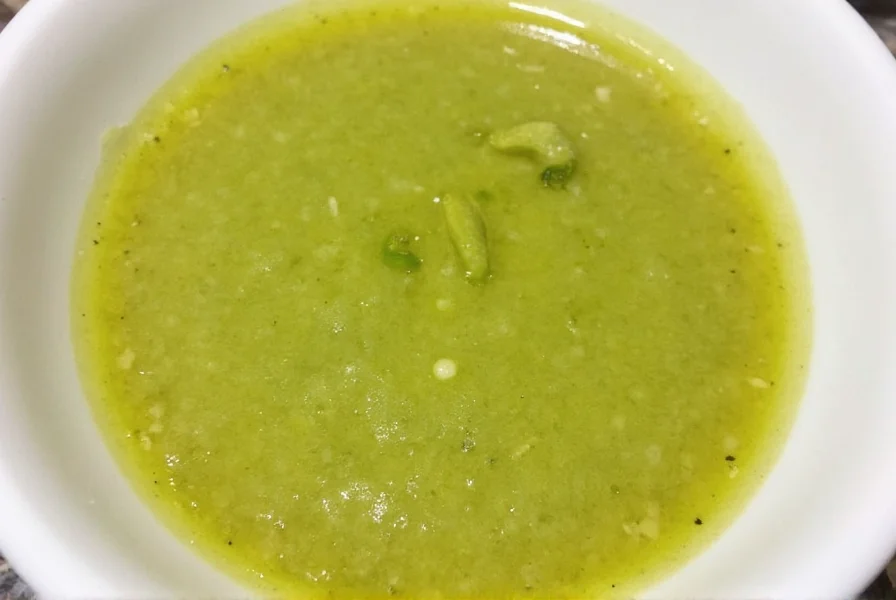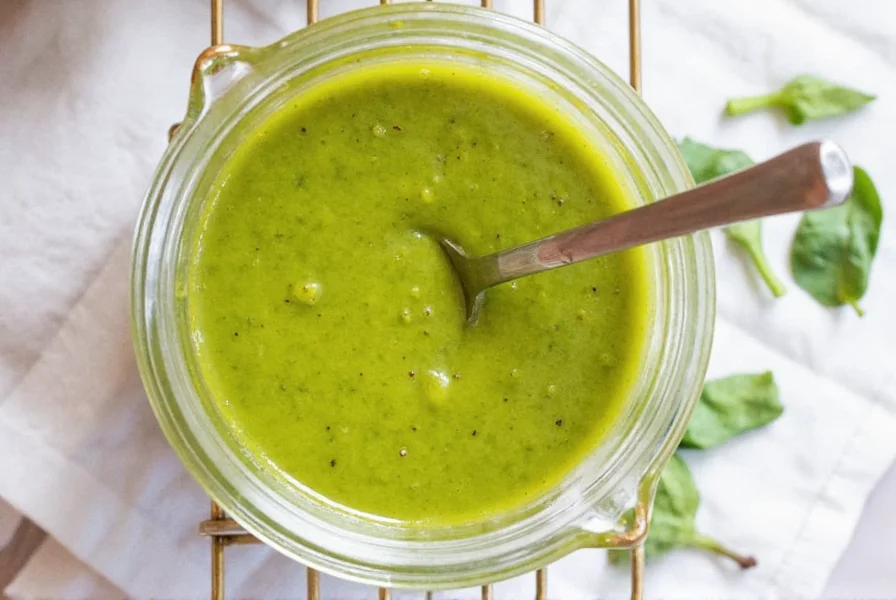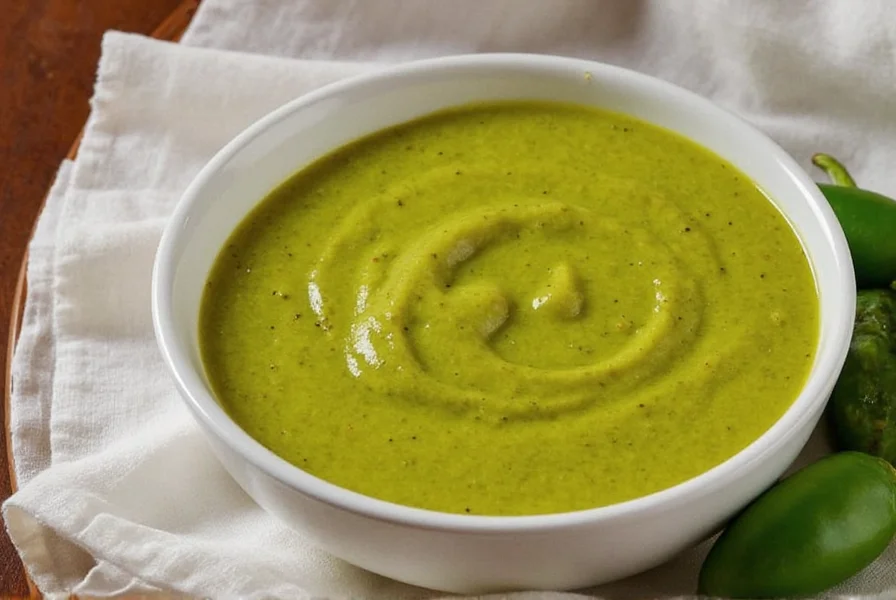If you've ever wondered what makes Mexican-inspired dishes taste so authentically fresh, jalapeño coriander sauce is often the secret ingredient. This creamy green sauce combines the perfect balance of heat from fresh jalapeños and cooling elements from cilantro, lime, and yogurt or sour cream. Unlike store-bought versions that often contain preservatives and artificial flavors, making your own allows you to control the heat level and freshness.
The magic of this sauce lies in its simplicity and versatility. The coriander (also known as cilantro in its leafy form) provides a distinctive citrusy freshness that complements the jalapeño's moderate heat. When properly balanced, the sauce delivers a complex flavor profile that enhances rather than overwhelms your dishes. Professional chefs often keep a batch of this sauce on hand because it transforms ordinary meals into restaurant-quality experiences with minimal effort.
Understanding the Flavor Profile
Jalapeño coriander sauce offers a sophisticated balance of flavors that makes it stand out from ordinary hot sauces. The fresh jalapeños provide moderate heat (2,500-8,000 Scoville units), while the cilantro contributes bright, citrusy notes. Lime juice adds necessary acidity to balance the richness, and yogurt or sour cream creates a cooling effect that makes the sauce approachable for most palates.
What separates a good jalapeño coriander sauce from a great one is the proper ratio of ingredients. Too much jalapeño overwhelms the delicate cilantro flavor, while insufficient acid makes the sauce taste flat. The ideal version should have a vibrant green color, smooth but slightly textured consistency, and a flavor that starts with fresh herb notes before revealing a gentle warmth that lingers pleasantly.
Essential Ingredients Breakdown
Creating an exceptional jalapeño coriander sauce requires understanding each component's role. Here's why each ingredient matters:
| Ingredient | Function | Substitution Options |
|---|---|---|
| Fresh jalapeños | Provides moderate heat and fresh pepper flavor | Serrano peppers (hotter), poblano (milder) |
| Fresh cilantro | Creates the signature citrusy, herbal base flavor | Flat-leaf parsley (milder, no citrus notes) |
| Lime juice | Balances richness with acidity, enhances freshness | Lemon juice (different citrus profile) |
| Yogurt or sour cream | Provides creaminess and cools the heat | Mayonnaise (richer), avocado (creamier) |
| Garlic | Adds depth and savory complexity | Roasted garlic (sweeter), garlic powder (less intense) |
Perfect Homemade Jalapeño Coriander Sauce Recipe
This foolproof recipe yields approximately 1.5 cups of sauce and takes just 10 minutes to prepare. For the best results, use ingredients at room temperature and ensure your blender or food processor is clean and dry.
Ingredients
- 2-3 fresh jalapeños, stems removed (adjust for heat preference)
- 1 cup fresh cilantro leaves and tender stems
- 1/2 cup plain Greek yogurt (full-fat for best texture)
- 2 tablespoons fresh lime juice (about 1 large lime)
- 1 small garlic clove, minced
- 1/4 teaspoon ground cumin
- Salt to taste (start with 1/4 teaspoon)
- 2-3 tablespoons water or milk (as needed for consistency)
Step-by-Step Preparation
- Prepare the jalapeños: Wear gloves when handling jalapeños to avoid skin irritation. Remove stems and seeds for milder sauce, or leave some seeds for extra heat.
- Combine ingredients: In a blender or food processor, add jalapeños, cilantro, yogurt, lime juice, garlic, cumin, and salt.
- Blend until smooth: Start on low speed, gradually increasing to high. Stop and scrape down sides as needed.
- Adjust consistency: Add water or milk one tablespoon at a time until desired thickness is reached. The sauce should coat the back of a spoon.
- Taste and adjust: Add more salt, lime juice, or jalapeño as needed. Remember flavors will intensify slightly after chilling.
- Chill before serving: Transfer to an airtight container and refrigerate for at least 30 minutes to allow flavors to meld.

Best Uses for Jalapeño Coriander Sauce
This versatile sauce shines in numerous applications beyond the obvious taco pairing. Consider these creative uses:
- Tacos and burritos: Drizzle over fish tacos, carnitas, or vegetarian options for instant flavor enhancement
- Grilled proteins: Use as a finishing sauce for grilled chicken, shrimp, or salmon
- Dipping sauce: Serve with roasted vegetables, sweet potato fries, or homemade tortilla chips
- Salad dressing: Thin with additional lime juice for a vibrant salad dressing
- Sandwich spread: Elevate turkey or chicken sandwiches with a flavorful spread
- Breakfast boost: Add to scrambled eggs or drizzle over huevos rancheros
Storage and Shelf Life Guidelines
Proper storage is crucial for maintaining the fresh flavor and vibrant color of your homemade jalapeño coriander sauce. Unlike commercial sauces with preservatives, this fresh version has a limited shelf life.
Store in an airtight container in the refrigerator for up to 5 days. The surface may darken slightly due to oxidation, but stirring will restore most of the color. For longer storage, freeze in ice cube trays, then transfer the frozen cubes to a freezer bag for up to 3 months. Thaw overnight in the refrigerator before use.
To maximize freshness, press plastic wrap directly onto the surface of the sauce before sealing the container. This minimizes air exposure and helps maintain the vibrant green color. Avoid storing in metal containers, as the acid in the lime juice can react with the metal.
Popular Variations to Try
Once you've mastered the basic recipe, experiment with these delicious variations that maintain the core jalapeño coriander flavor while adding new dimensions:
- Avocado jalapeño coriander sauce: Blend in 1 ripe avocado for extra creaminess and a subtle nutty flavor
- Smoky chipotle version: Replace half the jalapeños with 1-2 canned chipotle peppers in adobo sauce
- Mango jalapeño coriander: Add 1/4 cup diced mango for a sweet-heat contrast
- Herb-forward variation: Increase cilantro to 1.5 cups and add 2 tablespoons fresh mint
- Dairy-free option: Substitute coconut yogurt for Greek yogurt and add 1 tablespoon olive oil for richness

Troubleshooting Common Issues
Even experienced cooks encounter challenges when making fresh sauces. Here's how to address common problems with jalapeño coriander sauce:
- Sauce is too spicy: Add more yogurt or a small amount of honey to balance the heat. The cooling effect of additional dairy will mellow the spiciness.
- Sauce is too mild: Blend in additional jalapeño seeds or a pinch of cayenne pepper for controlled heat increase.
- Sauce is too thin: Return to blender and add 1-2 tablespoons of Greek yogurt or a small piece of bread to thicken.
- Sauce has separated: This happens when ingredients aren't fully emulsified. Blend again with 1 teaspoon of lime juice to recombine.
- Color has darkened: This is normal oxidation. Stir well before serving, or add a squeeze of fresh lime juice to brighten the color.
Frequently Asked Questions
Can I make jalapeño coriander sauce without a blender?
Yes, you can make jalapeño coriander sauce without a blender by finely mincing all ingredients and mixing them thoroughly. Use a mortar and pestle to create a paste from the jalapeños, garlic, and salt first, then incorporate the other ingredients. The texture will be more rustic but still flavorful. For smoothest results without a blender, a food processor works better than manual methods.
How can I reduce the heat level in jalapeño coriander sauce?
To reduce heat in jalapeño coriander sauce, remove all seeds and white membranes from the jalapeños before using them. You can also increase the yogurt or sour cream content, which naturally cools the heat. Adding a small amount of honey (1/4-1/2 teaspoon) helps balance spiciness through sweetness. For significantly milder sauce, use only 1 jalapeño and consider substituting half with a milder pepper like poblano.
Why does my jalapeño coriander sauce turn brown?
Jalapeño coriander sauce turns brown due to oxidation, similar to how avocados or apples brown when exposed to air. The chlorophyll in the fresh herbs breaks down when in contact with oxygen. To prevent this, store the sauce with plastic wrap pressed directly against the surface, use fresh lime juice (which contains antioxidants), and consume within 3-4 days. Adding a small amount of ascorbic acid (vitamin C) can also help maintain the green color.
What's the difference between jalapeño coriander sauce and salsa verde?
Jalapeño coriander sauce differs from traditional salsa verde in several key ways. Salsa verde is typically made with tomatillos and has a chunkier texture, while jalapeño coriander sauce features cilantro as the primary herb and has a smoother, creamier consistency from yogurt or sour cream. Salsa verde has a more tart, vegetal flavor profile, whereas jalapeño coriander sauce emphasizes the citrus notes of cilantro and lime with a creamier mouthfeel. The heat level in jalapeño coriander sauce is generally more controlled and balanced.
Can I use dried cilantro instead of fresh in this sauce?
Dried cilantro is not recommended as a substitute for fresh cilantro in jalapeño coriander sauce. The flavor profile changes significantly when cilantro is dried, losing its bright citrus notes and developing a more muted, earthy taste. Fresh cilantro is essential for the signature flavor of this sauce. If you absolutely cannot find fresh cilantro, flat-leaf parsley can provide some herbal notes, but the result won't have the characteristic coriander flavor that defines this sauce.











 浙公网安备
33010002000092号
浙公网安备
33010002000092号 浙B2-20120091-4
浙B2-20120091-4